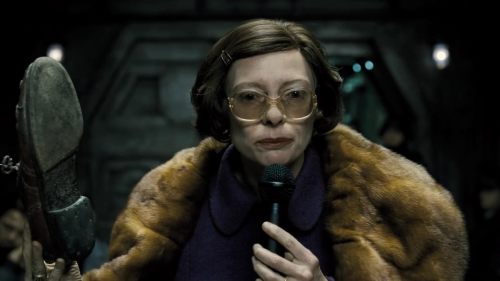Video Game Movies Can Be Good (They Just Shouldn’t Be Adaptations)
Video game movies suck.
That’s been a rule of game-to-film adaptations since Super Mario Bros, with virtually no exceptions. Most such adaptations have been garbage; the best merely hit the “okay” mark. Many hoped desperately that talented director Duncan Jones could turn the tide with Warcraft, but that film sags under the weight of its ambition and source material. Soon, Michael Fassbender and Justin Kurzel will face daunting odds and universal historical precedent with their film of Assassin’s Creed. Any attempt to adapt a video game directly to screen seems doomed to failure.
But what about adapting video games in a broader sense?
Cinema has always borrowed from other art forms, and the relationship between film and video games is a fascinating one. Arguably, video games have absorbed more from film than vice versa. Half the games out there are riffs on cinematic genre, from Uncharted to Grand Theft Auto to Halo. Many games lift visual language from cinema too, either in non-interactive cutscenes or in the “playable movie” aesthetic championed by David Cage and adopted, to varying degrees, throughout the industry. But like it or not, cinema borrows from video games, too, from from surface-level aesthetics to deeper structural and thematic elements.

Visual language is the most obvious and common way film borrows from games. Whether for a joke, a cultural reference, or to heighten the action, video game references can provide an easy laugh or thrill, but some films bake game style into their visual identity.
The most idiosyncratic and pervasive visual element in video games is their first- and third-person camera angles, and boy, have movies borrowed those. Third-person sequences with “behind-view” aren’t hugely common - Ernesto Diaz Espinoza’s little-seen Bring Me The Head of Machine Gun Woman plays with the idea, as does Gaspar Noe's drug-fuelled Enter the Void. First-person shots, on the other hand, though hardly invented by games, have been on a meteoric rise, thanks to the advent of cheap action cameras as well as the ubiquity of first-person shooters. The most notable example, Hardcore Henry, was entirely shot from that perspective, to varying degrees of success and motion sickness. The technique doesn't work particularly well for extended periods onscreen, simply because it lacks the storytelling opportunity offered by traditional cinematography. You're watching one shot type the whole time; it's not dynamic unless you're controlling it.
Regardless of camera angle, video games sport fluid continuity of action that's often missing from cinema. Though nonstop control of onscreen characters is key to such action, filmmakers still attempt to emulate it, via sequences that stand out as balletic and even overdesigned at times. Positive examples include Oldboy’s sidescrolling single-take hammer fight and the lengthy action and suspense setpieces in Children of Men. These scenes, though flamboyant, work to great effect, emphasising grueling physical effort in the former film and heightening tension in the latter. And even their more ostentatious qualities are nothing compared to Peter Jackson's indulgent Hobbit trilogy. Critics labelled many sequences from those films "video-gamey" - escaping the Goblin King; riding barrels; smelting a golden dwarf; practically half of Five Armies - because Jackson merely appropriated the surface qualities of video game action, without understanding how to employ them in a non-interactive medium. Watching characters effortlessly jump between platforms and slay enemies isn’t fun when you’re not doing it - we have to experience the "challenge" in some other way. Park Chan-Wook and Alfonso Cuaron pulled that off. Jackson didn’t.
Video gaming’s penchant for batshit insanity is not without representation in cinema either. The Wachowskis’ colourful and kinetic Speed Racer is the best Mario Kart adaptation we could ever hope for, for example, casting the laws of physics to the wind in favour of bouncy, boisterous fun. Scott Pilgrim Vs The World wears its influences on its sleeve, with Michael Cera grabbing 1UPs, turning enemies into showers of coins, and otherwise interacting with a barrage of onscreen pixel-art graphics. And Mark Neveldine and Brian Taylor’s Crank is full of the kind of bonkers digressions and visual flourishes that characterise the ludicrous Saints Row end of the gaming spectrum: a full-on sensory assault that actually outdoes the medium it sporadically references.

Diving deeper into gaming language, some films place their protagonists in alternate worlds where the rules skew away from reality or even bend to the will of the “player.” Sometimes these worlds are digital: The Matrix created a horrific future in which humanity dreams its worst Sims nightmare endlessly, for the benefit of machines, while The Thirteenth Floor questioned our own reality in a manner that would make Elon Musk proud. If we are living in a simulation, filmmakers must be the most self-aware simulated characters in it.
Inception goes a step further, giving up the technological pretense and dropping its characters into dreams. As much as the film world has labelled Inception as About Filmmaking (and no joke, that’s 100% what it is), it could equally be described as a film about games. It has level designers, weapon selection, mechanical exploits, and even its own equivalent of a "falling through the floor" glitch. More intriguingly, its time-dilation conceit mirrors the way games can blot out the real world. Virtual reality developers have noted a time-dilation effect when playing games in VR headsets; Inception trapping Leo DiCaprio in a collapsing city is just a more extreme version of that.
Other films have their characters play video games which control real events. The Last Starfighter, in which an arcade game serves as training for a real interstellar conflict, is notable for having itself spawned a successful video game. Gamer (Neveldine and Taylor again!) has a gamer kid controlling Gerard Butler’s every move in a deathmatch setting - a concept more promising than its execution. While Gamer amusingly satirises gaming tropes like teabagging and weird cultural phenomena like eSports, it expresses its link to gaming most strongly in its fractured, exposition-heavy, and mostly terrible storytelling.
The best “gaming story” in cinema, though, is David Cronenberg’s eXistenZ. Cronenberg merges his trademark themes of sex, infection, and paranoia with a full-on video game conspiracy tale, centring on fictional developer Allegra Geller and a frighteningly realistic new form of role-playing game. eXistenZ references non player character behaviour, quest structures, and multiplayer mechanics, but it does all that in an idiosyncratically Cronenbergian way that transcends mere reference. Its multiple levels of virtual reality blur the line between game and reality for the sake of theme, not cool; I highly recommend this underseen bit of '90s cyberpunk.

But the tippity-top tier of video game-influenced movies contains films that use the structural elements of games as the foundation of their narratives.
Adapting games' level-progression structure in a charmingly literal way, The Raid and Dredd take after video games more than anything else, despite empty accusations that one stole from the other or vice versa. Both play out in multi-level (see?) apartment buildings, with the heroes annihilating waves of enemies on their ascent to the top floor. Even minibosses show up. It’s a simplistic way to structure a story, perhaps, but it’s an effective one, especially for the action-heavy brand of cinema those two films belong to. Scott Pilgrim does this kind of thing as well, with Scott fighting his way through a series of Evil Exes on his way to ultimate victory, but Edgar Wright and Bryan Lee O'Malley acknowledge their inspirations in such an on-the-nose fashion that the structure clunks artificially. The game's been given away.
Taking a more metanarrative approach, Edge of Tomorrow and Source Code emulate a player’s journey as opposed to a character’s. They deal with time-travel conceits that mimic the death-respawn cycle of video games, with the player learning new information and/or improving their skills each time. Source Code, notable for coming from Warcraft director Duncan Jones, uses its time-loop structure for mystery, but Edge of Tomorrow really makes it sing as action sci-fi. Edge of Tomorrow puts character progression and pattern recognition at the heart of its protagonist’s arc, with Tom Cruise not only getting better at fighting aliens, but improving as a human being as well. That’s the kind of tight interlock between narrative, game mechanics, and character that the video game world could use more of.
At the top of this big ol’ pile of appropriated gaming ideas sits, triumphantly, Bong Joon-Ho’s Snowpiercer. In addition to being a terrific science fiction story in its own right, Snowpiercer is among the cleverest adaptations of video game structure and language thus far, whether intentional or not. Its characters’ journey through a cavalcade of train cars is like a series of video game levels, each with its own distinct character in tone and visual style. Chris Evans and his crew encounter a car full of hammer-wielding ninjas; one laying out backstory in a moderately interactive way; one filled with high-level henchmen. There’s even an action scene shot in first person. Add in some commentary on class structure, a hermetically-sealed world created by an eccentric billionaire, and an ending that questions the protagonist’s very agency, and you’ve got yourself the best unofficial BioShock movie ever made. (Oh yeah, and Chris Evans is totally a Grizzled White Man.)

So where does that leave us now? Direct adaptations of video games aren’t disappearing anytime soon: Assassin’s Creed is swan-diving into cinemas in December, while screen projects of Tomb Raider, The Division, and even Tetris are in the works. Many of these projects have solid talent attached to them, but it remains to be seen if they can break the stigma around adapting video games.
Recent history has proven that ideas from games can work in cinema; perhaps it's the heavily-franchised specifics that bog direct adaptations down. Games (especially those big enough to warrant film adaptations) are such corporatised properties that adaptations are doomed from the outset. If you remain faithful to the game, it's unlikely the movie will work, thanks to the gear-shift out of interactivity; go in a different direction, and you risk alienating fans, merely making another film in the genre that inspired the game in the first place. The fact that so many games exist as genre pastiche doesn't help. Maybe something like Gone Home could make for a decent character-driven drama. I don't know.
One interesting, final example is yet to emerge. Ready Player One is set to do nearly everything mentioned in this article, taking place as it does in a future where a virtual reality gaming system is the second life Second Life never became. Given that its source material is more concerned with referencing ‘80s culture than synthesising it (the book cribs so heavily it’s virtually succumbed to SIDS), it surely can’t be as good as the films listed above. But Steven Spielberg is at the helm, and if anyone can turn a fawning fanbook into a good movie, it’s Spielberg.
For the moment, at least, the best video game movies are the ones that never adapted a video game at all.



